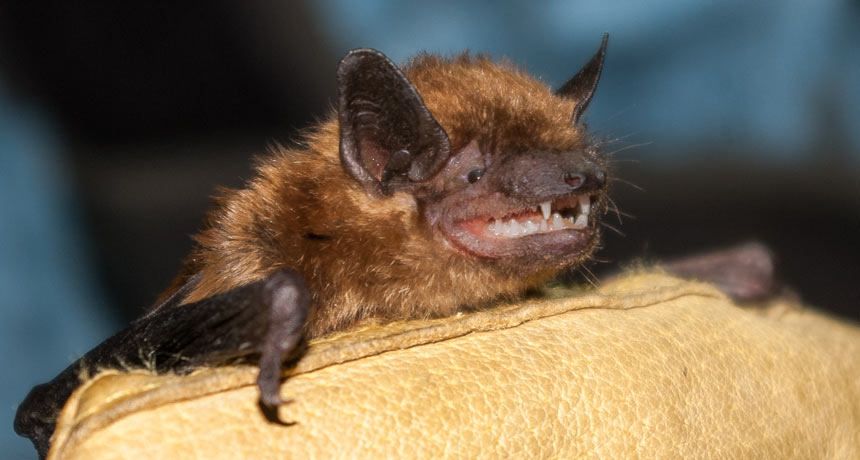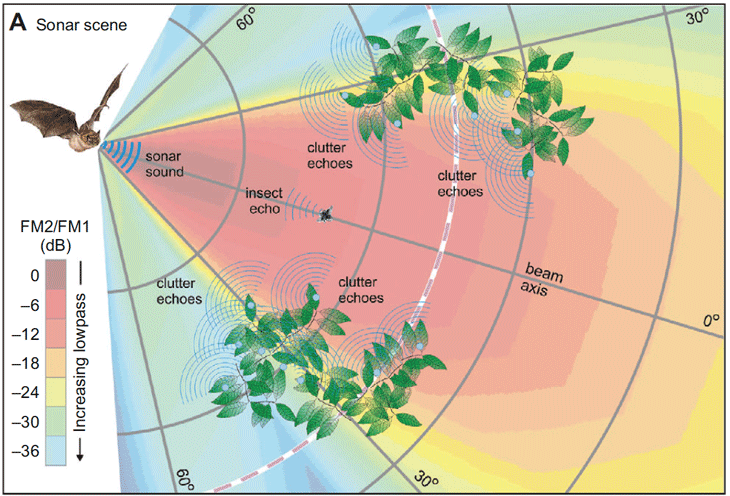To study attention, pay attention to bats
A review proposes bats as a model for how our brains make an object stand out

Studying how bats’ brains find prey using echolocation could help scientists understand how human brains pay attention.
Daniel Neal/Flickr (CC BY 2.0)
- More than 2 years ago
When you’re driving a car, you pass by people, places, colors and shapes. Suddenly, you see one particular combination of color, shape, placement and words. Out of all of the mind-boggling complexity going by, your brain picked out a stop sign in the distance. Soon, you stop the car.
Our brains pick a single object to pay attention to by bringing together many different stimuli. Individual groups of sensory neurons respond to specific features of an object. One group of cells might respond to red. Another might respond to the shape of the sign. Those populations come together at the same time to produce a signal that we pay attention to, disregarding the other objects nearby. This idea is called the temporal binding hypothesis, which posits that the “glue” that makes these signals come together is time. Groups of neurons that fire at the same time link the signals they represent together into a whole picture, the picture of a stop sign.
But it’s not yet proven that this is how our brains pay attention to objects. James Simmons, a neuroscientist at Brown University in Providence, R.I., believes he has the perfect model to study the temporal binding hypothesis: the big brown bat. He published a review on the subject August 15 in the Journal of Experimental Biology.
These small evening hunters operate in crowded scenes, with bugs, branches, leaves and other bats and birds in sensory profusion. And bats do this without sight, relying instead on echolocation. To echolocate, a big brown bat emits two pitches at the same time, a high and a low frequency pitch. The pitches bounce off objects in the immediate area, such as a tasty bug, and echo back to the bat’s ears. The echoes of these harmonic pitch pairs activate specific neurons in the bat’s brain.

This system makes bats especially ideal for investigating how time might bind together brain signals. “Each of the many, many neurons in the bat’s hearing system responses to each broadcast and to each echo with just a single response event — a single signal spike,” Simmons says. Because the system is so specific, disrupting the spikes could prove whether or not the temporal binding hypothesis is an accurate description of attention.
All you need is a hungry bat and the ability to disrupt the neuronal activity in its brain. Scientists can train the bat to echolocate toward a piece of food. Simmons says that scientists could then deliberately mess with the timing of the neural spikes from the bats’ echolocating efforts. If the bat becomes confused and misses its target, they will know that destroying the timing ruined the bat’s “image” of its prey. And if scientists could return the signal to the correct timing, and restore the bat’s accuracy, they will know that the “image” has recovered. Simmons has already attempted some of these experiments in his bats.
Derek Evan Nee, a cognitive neuroscientist at the University of California, Berkeley, says the idea is intriguing. He hopes that bats might be able to help scientists understand more about how we pay attention to our environment. While bats and primates process information in different ways, he says, bats could still be a useful model. “Our ability to rapidly shift attention among multiple items underlines important functions such as multi-tasking and reasoning,” Nee says. “Disorders of attention such as attention-deficit/hyperactivity disorder are increasingly prevalent. Illuminating the fundamental mechanisms of attention is a critical step toward improving attention.”
The results could also be important for sonar technology. “The sharpness and quality of sonar images improves when more frequencies are added to the signals,” Simmons explains. But with more frequencies, sonar processing becomes slow, as high frequency and low frequency sounds are compared against each other.
Simmons proposes that instead of comparing the sound strength, sonar should instead simply register the timing of each sound individually, and compare the times against each other. “The bat’s brain needs many more computing units, brain cells, to achieve the same result as a computer,” he concedes. “But at some point, making more computing units will be cheaper than making faster computers.” Simmons hopes to link small computing units together into “biologically-based sonar” that might be faster and more effective than current technologies.






